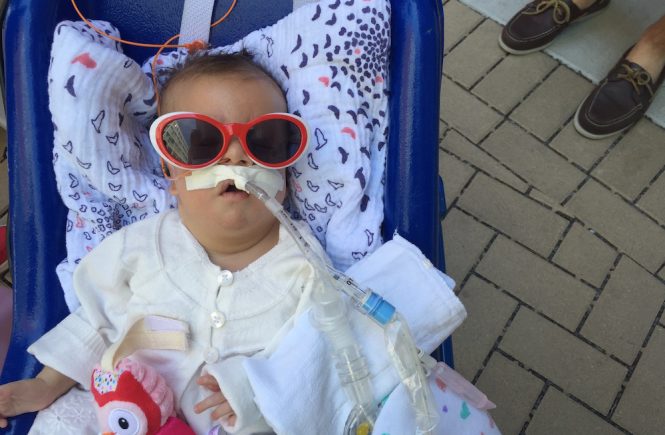In the hours and days following Olivia’s birth, Luke and I became acutely aware of the life-threatening nature of Olivia’s delivery. What seemed like a reasonably easy delivery for mom, caused incredibly serious trauma to our little girl.
Below is a summary of the issues and injuries sustained by Olivia during birth:
- Lack of oxygen.
- The team saw continuous and prolonged drops in her heart rate throughout labor. It’s unclear how much stress she was under, and if this actually had any long term effect.
- The umbilical cord was wrapped tightly around her neck at delivery. This also introduced a concern of hypoxia.
- Her inability to breathe on her own post-delivery resulted in her being immediately “bagged” after birth and later incubated. We’re still unsure if or how long she went without oxygen.
- Severe hemorrhaging from the vacuum assisted birth. These were initially considered to be the most severe and life-threatening injuries. This is also what caused (or was closely related to) most subsequent, acute issues in Olivia’s first weeks of life. Some include:
- Subgaleal hemorrhage – a hemorrhage between the scalp and skull bone (above the periosteum). This is the most extensive bleeding (the space can accumulate more blood than Olivia’s total blood volume). It’s also more prone to complications, such as anemia and bruising.
- Cephalhematoma – a hemorrhage found between the skull and periosteum.
- Minor bleeding within her brain.
- All of her head bleeds resulted in serious anemia (low red blood cells).
- Acidosis (acidic blood), in addition to the subgaleal hemorrhage was another acute and intense condition immediately following delivery.
- She received several blood transfusions in the first few days of life to try and correct the anemia, acidosis, and her inability to form blood clots.
- A small stroke suffered during (or immediately after) birth.
- Many of the above-described issues introduced the concern for swelling and possibility of brain damage, which made her a candidate for cooling therapy, a process that induces a mild hypothermia to reduce the brain’s need for oxygen and slow the various processes that otherwise result in damage. She was put on a cooling blanket for 72 hours post birth.
Despite their severity, today Olivia has recovered from most all of these events. But what we now know is that Olivia’s story is twofold: there is the story of how Olivia was born, which we described here and above, and the story of how Olivia was made.
Her birth story, while traumatic, may not be her biggest battle.
The story of how Olivia was made is still one that we and her primary team are working every day to understand. This story, if ever known, holds the keys to why delivery was so hard and what this life holds for her.
We don’t have all of the answers and we may never get some, but we hope for happily ever after.




2 Comments
She is such a little fighter for life. We love her sooo much. Nana xoxo
Olivia is a brave little fighter. Thinking of you and sending love to all. xoxo